199. DISQUIETING OBJECTS - Gabe Klinger
Disquieting Objects
The radical austerity of António Reis and Margarida Cordeiro
"A decisive and original phase in modern cinema, an obligatory point of passage for anyone, in this or any other country, who wants to continue making a certain type of cinema—a cinema that tolerates and acknowledges its own austere and radical intransigence." —João César Monteiro on Jaime (1974).
"For me, this film reveals a new cinematographic language. As far as I know, a director has never committed, with such obstinacy, to the cinematographic representation of a region: that is to say, to the difficult communion between men, landscapes, and the seasons. Only a foolish poet could produce such a disquieting object." —Jean Rouch on Trás-os-Montes (1976).
"Few films make you want to whisper, thrilled, ‘Where am I?' Not for fear of being lost, but because of the emotion of being deep in sleep, suddenly waking up, and not knowing... what world we have woken up in." —Serge Daney on Ana (1985)
There aren't many filmmakers whose work resulted in such an enviable catalogue of laudatory letters and articles, who inspired devotion from some of today's most renowned directors, and yet whose films remain almost completely unknown outside of their native land. To anyone who was immersed in the fervent cinématheque culture of the immediate post-Salazar era in Portugal, the four films that António Reis, a poet, painter, sculptor, and filmmaker, made with his wife, Margarida Cordeiro, are the stuff of legend. Just ask Manoel de Oliveira, Pedro Costa, or Jean-Marie Straub. For those lucky enough to be in attendance, this year's Jeonju International Film Festival in South Korea has imported three of the films in gorgeous 35mm from the Cinemateca Portuguesa: Jaime, Trás-os-Montes, and Ana.
Born to peasants in rural Portugal and growing up in humble, near-destitute surroundings before migrating to cities (Porto in Reis's scase, Lisbon in Cordeiro's), both adopted a profoundly moral position in their work that the critic Luis Miguel Oliveira sums up with the following equation: film that space, understand those people. Reis was attracted to Porto for its rich intellectual life, which he immediately became active in, presenting his first short film, Auto de Floripes (1959), at a local film club. According to various sources, Reis's initial forays into cinema are conventionally narrated, stylistically unremarkable documentaries on local subjects. At a screening in 1962, Reis met the then 53-year-old Manoel de Oliveira, who was sufficiently impressed by the younger director that he took him on as his assistant on Acto de Primavera (1963). On the last weeks on the set of that seminal film — Oliveira's first masterpiece and the beginning of Portugal's radically modern filmmaking period — Reis was called back to his day job in Porto. As a good-natured gesture, Oliveira asked him to direct a scene before he departed. Recalling that day, Oliveira wrote:
I was curious how he would take on the task. But without saying yes or no, and with a mischievous smile, he quietly returned to his position as assistant. I was surprised, but accepted his modesty, and did not insist. We never talked about that episode afterwards. It was as if it had never happened, but my curiosity was unsatisfied. I'll never know if he didn't accept because of shyness, or because of an excess of delicateness, respecting a job that belonged to me.
If the experience of Acto de Primavera registered with Reis, it did not figure noticeably into his work until 1973, when he collaborated with Cordeiro, a psychologist, on their first film, the 35-minute Jaime. Cordeiro had been working at the Miguel Bombarda sanitarium in Lisbon, when she discovered an odd drawing on one of the walls. She found out that it was by a paranoid pschizophrenic named Jaime Fernandes who had passed away a month earlier. Upon further inquiry she discovered more than a hundred of his artworks that were left behind, and contacted Reis about shooting a documentary. A milestone of the national cinema and a symbol of a transitional moment, it was released a few days after the Carnation Revolution that led to the fall of Salazar's authoritarian dictatorship. Reis and Cordeiro's portrait of the sanitarium, where Fernandes was interned from the age of 38 to his death at 69, doubles as a microcosm of Portuguese society at the precise moment when the country's intellectual left is attempting to break with the stagnating insularity of the dictatorship.
When provocateur João César Monteiro saw Jaime, it changed his personal concept of cinema. His celebrated onscreen alter ego João de Deus, who's seen as a lunatic outsider in films such as God's Comedy (1996), may be derived in part from Fernandes. In Monteiro's tour de force Remembrances of the Yellow House (1989), the auteur pays explicit homage to Jaime by featuring the architecturally distinctive sanitarium at the film's climax. Monteiro's Deus, who's interned there himself, runs furiously around its oval-shaped courtyard with white walls and black compartments as the camera pans around the full 360 degrees, an image that recalls the simple form of the zoetrope. As pictorially disarming as this sequence is, it is a mere shadow of the lyrical shots that open Jaime. Reis and Cordeiro delicately integrate us into this solitary place, first acknowledging their status as outsiders by having the camera peer at the patients form slits and slivers in the doorways and walls. The pervasive feeling of loneliness, made even more poignant by the use of Armstrong's recording of "St. James Infirmary Blues," recalls another formative documentary with poetic touches and a careful moral stance with regards to outsiderness, Forough Farrokhzad's The House Is Black (1962).
Reis and Cordeiro's initial reluctance to plunge right into the sanitarium and document its patients suggests that the two are still sorting through the moral ramifications of filming in such a place. Fernandes, for example, is never concretely represented except through a single blurry photograph. This might seem an odd strategy for a documentary portrait—there are no testimonies from those who knew him, as there might have been in a more traditionally structured film—but by choosing to incorporate his paintings and writings as our primary visual and narrative reference point, Reis and Cordiero afford a sense of the artist's mental space. Fernandes, whose outsider work is highly regarded in Portugal, painted in an anxious spirographic style using ballpoint pens, pencils, and even matchsticks dipped in mercury. His subjects are largely pastoral: cows, men tending to horses. But there is also a whimsical side to the work as we often see his human subjects become part of larger, amorphous natural objects, or simply imbedded into the bodies of animals.
In their next project, the ambitious Trás-os-Montes, Reis and Cordeiro would create their most coherent politique. As Reis told Serge Daney in an interview for Cahiers du cinema:
We never filmed a peasant, child or old man, without having turned into his companion or friend. They could tell we were "cinema workers" since sometimes we would put in 16-18 hours a day, and I think they liked to see us work very much.
Trás-os-Montes was shot in three distinct periods in 1973, totaling some 70 days of production, in the tiniest nooks and crannies of the northeasterly province of the title, the least developed and most remote region of Portugal. Reis and Cordeiro's minimal crew traveled exclusively on foot from village to village, 16mm equipment and negative in tow; the farthest-flung areas were impossible to reach except under the filmmakers' own steam. Casting and finding locations as they went along, Reis and Cordeiro created less a documentary than a timeless evocation of a specific place and its citizens using a highly controlled austere form. Characters are directed in a series of long, often wordless shots and an internal logic of continuity is related through simple camera movements that lead us through 44 different locations (none of them identified directly). Rural tasks such as collecting food and firewood are related in the film, but if there is a narrative thread it remains oblique. One important tangent is the journey of two boys who start off in an explicitly 20th-century setting and whose path becomes increasingly more timeless and magical. Their wardrobe, for example, goes from jeans and suspenders to medieval tunics, and they encounter a princess at the foot of a rocky hill.
Perhaps what fascinated Jean Rouch about Trás-os-Montes is how it resists the scientific impetus of filmic ethnography, instead veering into a more abstract, even literary sphere. This is reflected in the filmmaking process, which never attempts to be more sophisticated than the people being depicted. There are no complicated efforts in staging or camera movement—the mise-en-scène is remarkably direct, usually capturing the characters at their height and in the spaces that they're familiar with. Hence the film is not a predetermined force that imposes a different, more urbanized state of consciousness over the subjects, but rather joins them, creates a film for them, embodies the tempo and depicts the progression of their lives. Whether or not the film would be embraced by the citizens of Trás-os-Montes — who according to Reis didn't have access to TVs or movie theaters, who often lived without electricity, and had only heard of movies but had never seen any — may be beside the point, but it's also clear that as Portugal moved away from Salazar and into a period of political and economic reform, small towns would eventually all be connected by highways and the provincial lifestyle so generously portrayed in Trás-os-Montes would be wiped out almost completely. Reis and Cordeiro had created a monument to these people, plain and simple.
The Ana (1985) of the title of their next film is Cordeiro's grandmother, who was also from the Trás-os-Montes region, where she still lived. By the mid-1980s, Portuguese society had changed considerably, and these areas of extreme poverty and seclusion were suddenly of interest to historians and anthropologists. Reis and Cordeiro found that they were not alone — that the citizens of the region now had to adjust to a constant flux of outsiders, who came to investigate or to appropriate the culture for themselves and for their institutions. The experience of Trás-os-Montes was unrepeatable, and Reis and Cordeiro knew that this time they would have to approach the material with a keen sense of what had changed. Ana is essentially about the gradual dispersal of a family, the eventual death of Ana herself representing the end of a generation. In an extended sequence in which an anthropologist — Ana's fictional son, and an obvious stand-in for Cordeiro — gives an informal lecture on the origins of Trás-os-Montes' dwellers, a few scattered bystanders look on with vague interest as the expert speaks in highly technical terms. An elderly woman sits and observes passively while sewing, Reis and Cordeiro validating her position and point of view by framing her independently from the others in the following shot. Cars, modern appliances, and industrial clothes are seen throughout Ana where they would have been nonexistent in most parts of the earlier film. Shot in 35mm and with two of Portugal's best cinematographers, Elso Roque (who had shot Oliveira's Benilde or the Virgin Mother [1975] and Francisca [1981]) and Acácio de Almeida (a disciple of Nestor Almendros), the film is far less impressionistic than Trás-os-Montes, focusing on concrete textures and vistas to give a more material sense of the shifting landscape.
Rosa de Areia (1989), the final work by Reis and Cordeiro, was less an ethnofiction like Trás-os-Montes or Ana than a non-narrative, purely abstract film. The relative success of their previous films also meant greater scrutiny, and when Rosa de Areia had its world premiere in Berlin it was written off almost immediately (Variety's dismissal included this choice soundbite: "Picture will only appeal to audiences exclusively concerned with film language and poetry"). Made outside the comfort zone of obscurity, small crews, and freedom from producers, Rosa de Areia is Reis and Cordeiro's most strained effort, lacking the docu-unpredictability of the earlier films. It has remained their least talked-about work, and is often not included in retrospectives. Daney had said that Reis and Cordeiro were among the few directors he knew who seemed to have successfully adopted Mizoguchi's saying that a filmmaker must wash one's eyes before every shot. With Rosa, their process was far too burdened with representing a set of purely literary conceits (magical realism being perhaps the most pronounced), forfeiting any spontaneity that would derive from their engagement with real people and situations. Around the same time a Swiss producer approached Reis and Cordeiro about adapting Juan Rulfo's Pedro Páramo, but on September 11, 1991, the unexpected news came that Reis had died. Cordeiro (who's now 72) hasn't touched a camera since. The loss would be greater had they not produced Jaime, Trás-os-Montes, and Ana, three films that came and went with their time, and, to paraphrase the critic August M. Seabra, were like bright flashing comets in a darkened sky.
Gabe Klinger
Museum of The Moving Image - Moving Image Source, 3 de Maio de 2011, EUA.
Gabe Klinger is a writer, curator, and teacher based in Chicago. He has contributed to Cinema Scope, Film Comment, and Sight & Sound, among other publications.


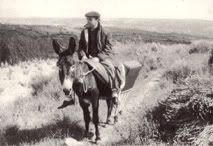

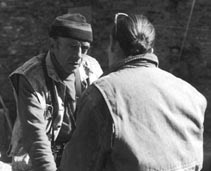
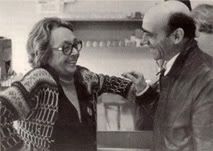

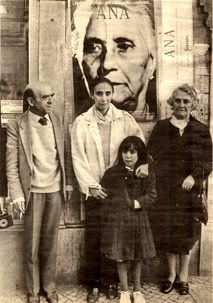
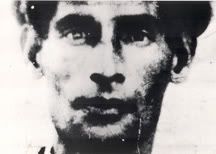
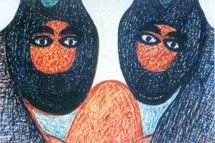
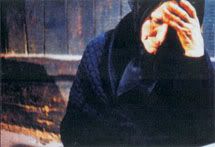
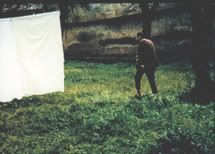
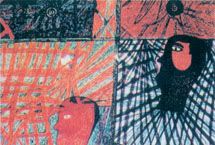
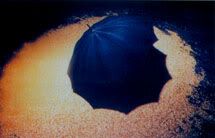

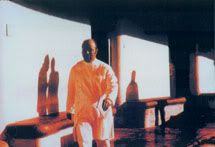
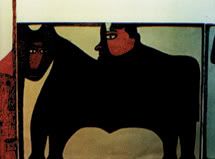
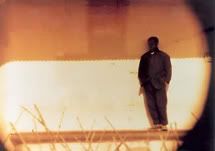
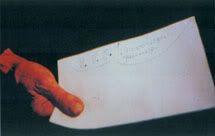
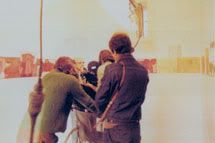
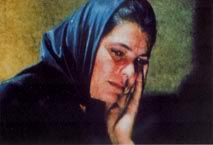
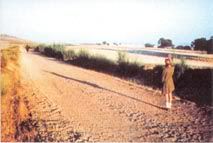

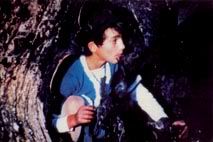


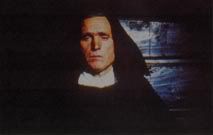

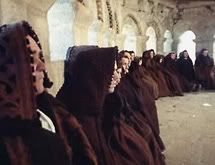
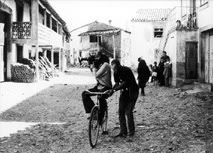

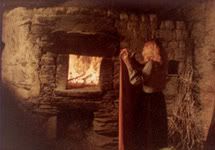
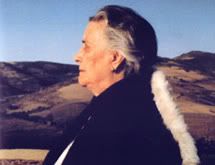
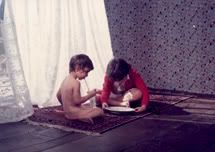
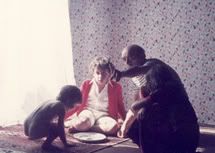
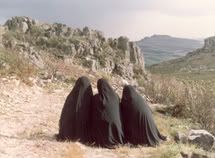

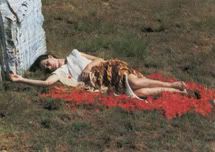
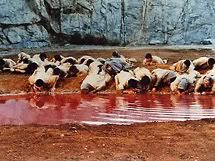

0 Comments:
Enviar um comentário
<< Home